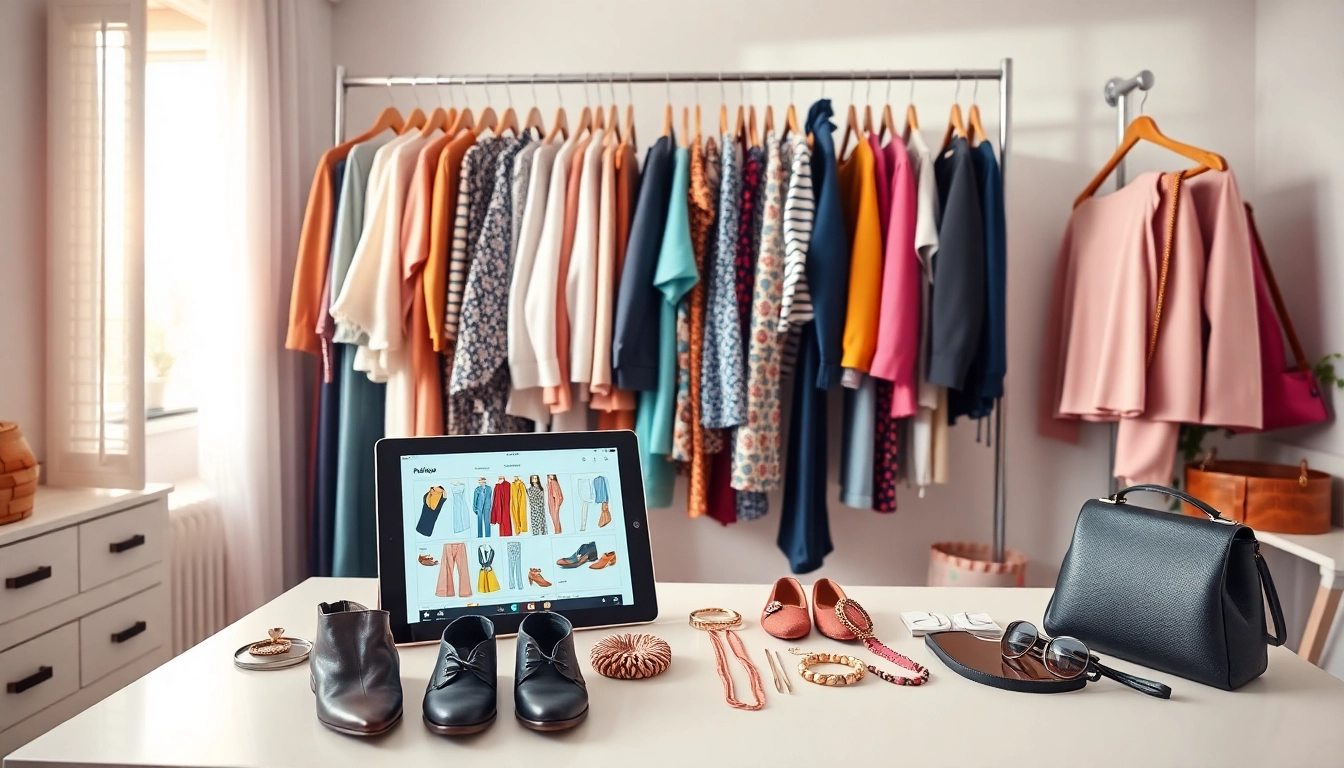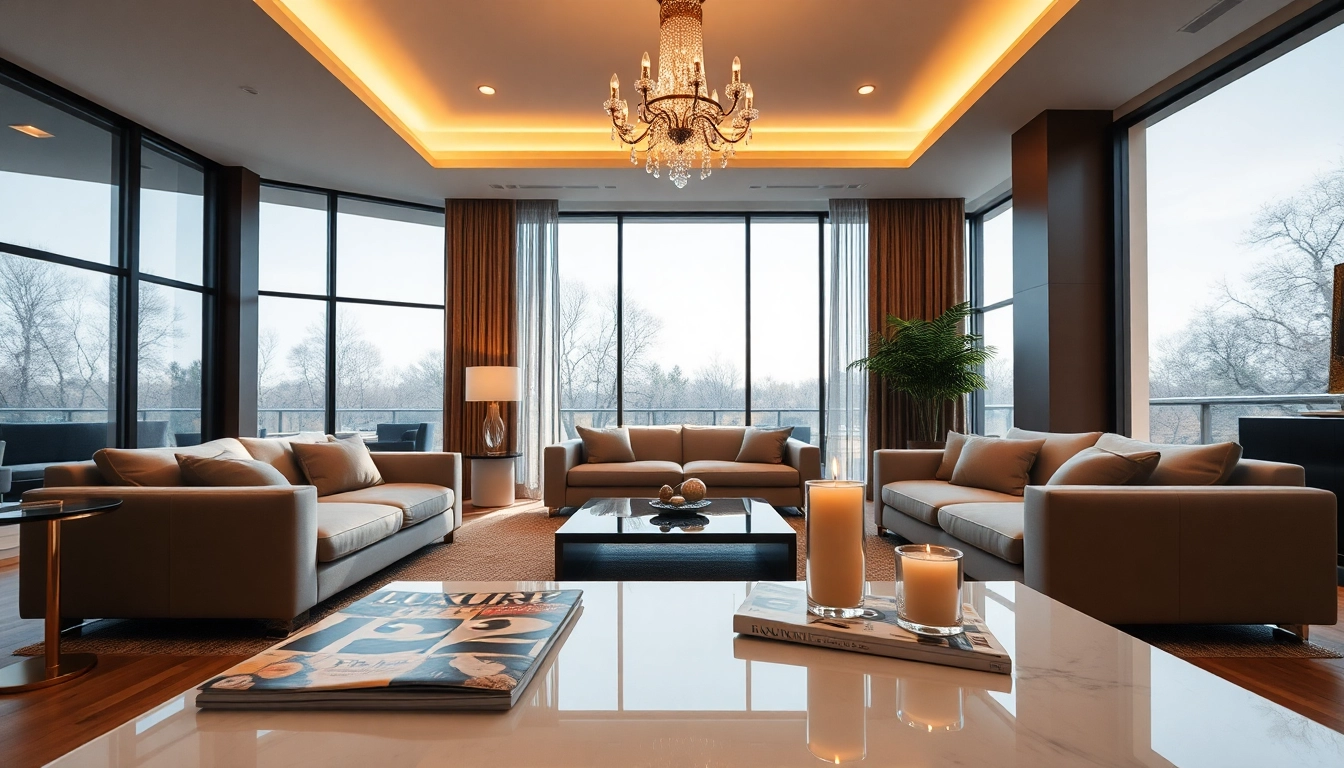Understanding the Basics of an Outfit Planner
What is an Outfit Planner?
An outfit planner is a versatile tool designed to assist individuals in organizing and coordinating their wardrobe effectively. By allowing users to visualize their clothing options, an outfit planner can help create various ensembles tailored to different occasions. It serves as a digital or physical space where you can log your clothing items, plan outfits for specific days or events, and track your fashion choices over time. The primary function of an outfit planner is to simplify the decision-making process when it comes to dressing, allowing you to combine your personal style with practicality.
Why You Need an Outfit Planner
Utilizing an outfit planner can revolutionize your approach to daily dressing. First and foremost, it saves time. In a world where first impressions matter, knowing what to wear without having to rummage through your closet each day can be invaluable. Furthermore, an outfit planner helps reduce decision fatigue. When you simplify the choices available, you can concentrate more on enjoying your day rather than worrying about your outfit.
Additionally, an outfit planner promotes creativity in your style. By keeping a record of your outfits, you can explore different combinations that you might not have considered otherwise. It also aids in budgeting, as it can help you take stock of your current wardrobe, making it easier to identify gaps or items that can be reused creatively, thus reducing impulsive purchases.
Key Components of a Successful Outfit Planner
A successful outfit planner should include several essential components to best serve its intended purpose:
- Wardrobe Inventory: A detailed list of your clothing items, accessories, and shoes. This inventory provides a foundation for planning outfits.
- Calendar Integration: A section for planning outfits for specific dates or events, enabling you to prepare ahead of time.
- Outfit Ideas: A space to log favorite outfits or inspiration, allowing you to revisit successful combinations.
- Weather Tracking: Incorporating a weather section ensures that you consider climate conditions when planning your outfits.
- Style Goals: A part for personal goals related to fashion, such as transitioning to a capsule wardrobe or exploring new styles, fosters continuous growth in your closet management.
Choosing the Right Format for Your Outfit Planner
Digital versus Traditional Outfit Planners
When deciding on an outfit planner format, you can choose between digital and traditional methods. Digital outfit planners, often available as apps or online tools, offer the advantage of accessibility and easy updates. You can carry them on your smartphones and adjust your outfits on the go. Features may include automatic weather updates, notifications for outfit suggestions, or integration with online shopping for quick purchases.
In contrast, traditional planners often have a tactile appeal and can improve focus by reducing distractions from devices. A handwritten planner allows for personal creativity, such as doodling or customizing sections according to your unique style preferences. Ultimately, the choice should reflect your lifestyle, preference for technology, and how much you value hands-on engagement with your wardrobe.
How to Customize Your Outfit Planner
Customization is critical for ensuring that your outfit planner serves you best. Begin by selecting a format that resonates with you, whether it’s a digital app or a classic notebook. Next, decide how to categorize your wardrobe inventory. You can segregate clothes by type, occasion, or color. Moreover, it’s helpful to maintain an up-to-date personal style guide, outlining your favorite colors, patterns, and clothing cuts that best reflect your personality.
Incorporating visual elements such as photos of outfits can also enhance your planner. This offers an instant reference point for visual learners, making it easier to remember which pieces work well together. Consider adopting tags or color codes—for example, marking items that are versatile or particularly suited for specific seasons. These personalized adjustments ensure that your planner truly reflects your style and meets your needs effectively.
Incorporating Wardrobe Essentials
Every well-rounded outfit planner should include a section dedicated to wardrobe essentials. These items are versatile, timeless pieces that can form the foundation of your outfit strategy. Essentials typically include classic items like white shirts, a tailored blazer, black trousers, and good-quality jeans. Additionally, seasonal essentials such as winter coats or summer dresses should also find a place in your wardrobe inventory.
When integrating these essentials into your planner, ensure you also note different ways to style them to maximize versatility. For instance, think about how a simple blazer can elevate a casual outfit or a little black dress can transition from day to night with just a few accessory changes. Documenting these combinations can help you make the most out of your key wardrobe pieces.
Leveraging Technology in Your Outfit Planner
Top Apps and Tools for Outfit Planning
In today’s digital age, various apps and tools can enhance your outfit planning experience significantly. Some popular outfit planning applications allow you to upload images of your clothing, creating a virtual closet. From there, you can mix and match and create outfit combinations without physically trying everything on. Consider features like outfit logging, which allows you to document what you wore on particular days, helping you avoid repeats in a short timeframe.
Another feature to look for is collaborative planning, especially beneficial for events or travel. Apps that allow sharing outfits can encourage feedback from friends, providing additional perspectives on combinations you might overlook. Lastly, consider platforms that incorporate shopping, where you can easily purchase new items that fit seamlessly with your already established wardrobe.
Integrating Fashion Inspiration
Finding fashion inspiration is crucial in keeping your outfit planner exciting and fresh. Using dedicated mood boards can help collate inspirit from blogs, magazines, and social media platforms. Many fashion enthusiasts turn to platforms like Instagram or Pinterest to curate pinboards filled with outfit ideas that inspire new combinations. These platforms allow you to explore real-time trends while maintaining your unique style identity.
Consider actively noting specific styles from the influencers or brands you admire in your planner. This practice could mean documenting colors, cuts, or patterns that resonate with you. By keeping a separate inspiration section, you ensure that your outfit choices continually evolve, avoiding the stagnation of style that can come with repetitive wardrobe management.
Utilizing Social Media for Outfit Ideas
Social media is an invaluable resource for both inspiration and community building. Participating in fashion-related groups on platforms like Facebook or following specific hashtags on Instagram can expose you to a wide array of ideas from diverse styles and cultures. Engage with fellow fashion enthusiasts, share your outfit choices, and solicit feedback on outfit ideas within these communities.
Platforms like TikTok have revolutionized how outfit ideas are shared, offering quick videos showcasing styling techniques and wardrobe hacks. These bite-sized segments can introduce innovative ways to combine pieces you may have in your closet. Consider using these platforms not only for inspiration but also to document your own journey towards honing your style, thus creating a supportive cycle of inspiration and motivation.
Best Practices for Effective Outfit Planning
Creating a Capsule Wardrobe
A capsule wardrobe focuses on streamlining your clothing collection to emphasize versatility and functionality. The essence of creating a capsule wardrobe is to select a limited number of pieces that can be mixed and matched to generate numerous outfits. This not only saves space but also makes dressing easier and more enjoyable.
Begin by reviewing your existing wardrobe. Take note of which items you love and wear frequently, as well as those that remain largely untouched. Aim to keep high-quality, timeless pieces that complement each other while discarding those that aren’t multifunctional. The typical capsule wardrobe consists of around 30-40 items, including tops, bottoms, a few dresses, and outerwear, ensuring that each piece has a purpose and fits well with the others.
Tips for Seasonal Wardrobe Management
Seasonal changes can significantly impact your outfit planning. Effective wardrobe management means transitioning clothing in and out to accommodate the shifting weather. To streamline this process, consider designating a specific time each season to sort through your wardrobe. During this process, evaluate which items are appropriate for the upcoming season and which should be stored away or donated.
It may also be helpful to create a seasonal checklist outlining essential pieces to wear during each part of the year. For instance, during the summer, prioritize light fabrics and breathable clothing, while in the winter, shift focus to layering items and warmer materials. Scheduling these wardrobe audits promotes a more enjoyable dressing experience, leading to a stronger connection with your clothing.
Maximizing Outfit Versatility
Versatility is the hallmark of an impressive wardrobe. To maximize your outfit versatility, prioritize pieces that can function in multiple contexts. Aim for items that are neutral or easily customizable with different accessories, allowing for quick style shifts depending on occasion. For instance, a simple black dress can be dressed up with statement jewelry for a night out, or made more casual with a denim jacket and flats for a day at the park.
Furthermore, consider the power of layering. Lightweight tops or dresses can transition into cooler seasons by layering with sweaters, cardigans, or outer jackets. Building outfits around layering options can expand your wardrobe options significantly, while keeping your overall outfit scheme cohesive.
Measuring the Success of Your Outfit Planner
Tracking Your Fashion Choices
To assess the efficacy of your outfit planner, it’s essential to measure and track your fashion choices over time. Keeping a log of worn outfits can reveal which combinations work best and what may need to be adjusted. Incorporate a feedback mechanism, such as a rating system or personal notes about comfort and reactions to outfit choices, to gather useful insights for future planning.
Consider factors such as how often you wear particular items, what styles receive compliments, and which combinations make you feel the best. This data will not only assist you in refining your wardrobe but also foster a deeper understanding of your personal style preferences.
Adjusting Your Planner Based on Feedback
Adaptability is key to an effective outfit planner. As you track your fashion choices and extrapolate insights from feedback, regularly revisit your planner to implement updates. Are there items that continue to remain unworn? Are there patterns that consistently receive admiration? Evaluating this feedback allows you to adjust your approach, removing items that no longer serve you and incorporating new ones aligned with your evolving style.
Engaging in this process not only streamlines your wardrobe but also cultivates a more intentional dressing routine. As your preferences change over time, feel free to evolve your outfit planner to fit your lifestyle better, ensuring that it remains relevant and useful.
Celebrating Your Style Progress
Acknowledging your style progress is fundamental to maintaining enthusiasm for your outfit planner. Reflecting on how your style has evolved over time fosters a sense of accomplishment and motivation. You may create a designated section within your planner to document key milestones, favorite outfits, or outfits that garnered positive attention.
Consider hosting personal challenges, such as wearing every item in your wardrobe over a certain period. Documenting your participation and reflecting on your experience can help deepen your appreciation for your clothing and inspire creativity within your style. Celebrating these journeys not only enhances the planning experience but simultaneously promotes continual personal growth in your fashion choices.



